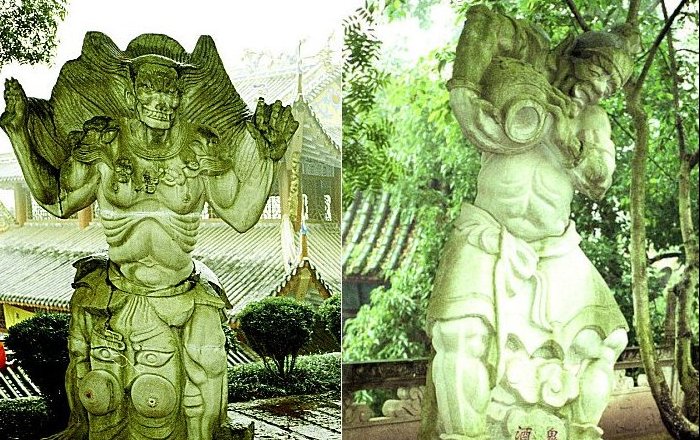Ellen Lloyd - AncientPages.com - An almost 2,000-year-old large complex of temples, shrines, and monasteries known as Fengdu Ghost City is devoted to the afterlife. Many temples and shrines are decorated with paintings and sculptures of people tortured for their sins.
Undoubtedly, the Fengdu Ghost City is one of the fascinating places to learn about Chinese ghost culture.
Fengdu Ghost City is approximately 170 kilometers (110 mi) on the northern bank of the Yangtze River in Fengdu County, China.
The city has its unique history of ghosts and the afterlife, known from the times of the Eastern Han Dynasty.
Two officials from the Chinese imperial court decided to go to Ming Mountain to practice Taoist teachings and eventually achieved immortality.
Fengdu complex has fascinating statues of Diyu and Naraka. According to Chinese mythology and Buddhist teachings, Diyu means the traditional Chinese Hell. It is based on the concept of Naraka, an underground maze (underworld) with various levels and chambers, to which souls are taken after death to be better for all the sins they committed while alive.
The mythological Diyu has its capital – Youdu. The Fengdu site's history dates back almost two thousand years, at least in legends, according to many legends.
Fengdu statues in a ghost city. Image left: Lust - image credit: Gisling - CC BY-SA 3.0 ; Image right - Drunkard - image credit: Gisling - CC BY-SA 3.0
Its history focuses on the afterlife and combines the beliefs of Buddhism, Confucianism, and Taoism; it is also mentioned in many classic Chinese literary sources.
During the Tang Dynasty, a temple was built on Ming Mountain. The structure depicts life in Hell; many torture devices and other hellish images are displayed there.
They represent the ancient belief that reasonable people would be treated well in the afterlife and that bad ones would end in Hell.
According to Chinese beliefs, in the vision of the afterlife, the dead (or ghosts) must undergo three necessary tests to enter the afterlife. The tests occur at 'Nothing-To-Be-Done-Bridge' (built during the Ming Dynasty), 'Ghost Torturing Pass,' and 'Tianzi Palace.'
Another attraction is the Last Glance at Home Tower, where spirits dispatched to Hell could take one last look at their families. There are different protocols for crossing the bridge depending on sex, age, and marital status. At the bridge, demons allow or forbid passage. Everything is about 'the good' and 'the evil.'
The good can pass while the evil will be pushed to the water below.
Written by - Ellen Lloyd - AncientPages.com
Updated on March 5, 2023
Copyright © AncientPages.com All rights reserved. This material may not be published, broadcast, rewritten or redistributed in whole or part without the express written permission of AncientPages.com
Expand for references